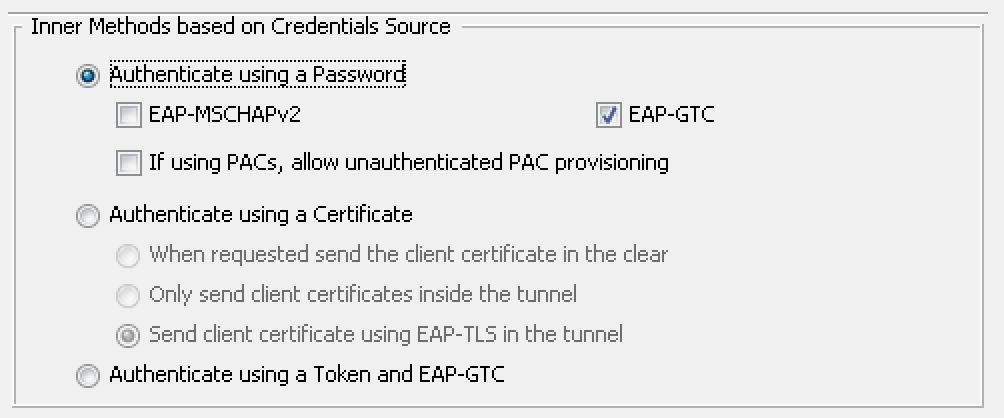- Cisco Community
- Technology and Support
- Security
- Network Access Control
- Re: ISE integration with RSA
- Subscribe to RSS Feed
- Mark Topic as New
- Mark Topic as Read
- Float this Topic for Current User
- Bookmark
- Subscribe
- Mute
- Printer Friendly Page
ISE integration with RSA
- Mark as New
- Bookmark
- Subscribe
- Mute
- Subscribe to RSS Feed
- Permalink
- Report Inappropriate Content
02-14-2018 08:43 AM
Hi,
Two questions regarding RSA integration:
1) In ISE, there are two way of integrating to the RSA server, either by using Native SecurID protocol or RADIUS protocol.
In my customer, the ISE admins couldn't get a sdconf.rec from the RSA admins so they have configured the integration via the RADIUS protocol. Is there any drawbacks?
2) They are actually planning to use OTP as an inner method of EAP-FAST.
In this case, it looks like we can configure it in two different ways, what is the difference between a "password" and a "token"?

Thanks
- Labels:
-
Identity Services Engine (ISE)
- Mark as New
- Bookmark
- Subscribe
- Mute
- Subscribe to RSS Feed
- Permalink
- Report Inappropriate Content
02-14-2018 12:49 PM
Hi,
For 1, please check Oncampus RSA authentication section in
Two Factor Authentication on ISE – 2FA on ISE
For 2, Usually inner-methods such as MSCHAP use passwords that doesn't change unless there is a expiry period.
OTP is a one time password mechanism to support variety of servers such as OTP servers, RADIUS servers etc, idea is to generate one time password using a token which is different everytime you authenticate. EAP-GTC is an inner eap method supporting this.
Hope it helps.
Thanks
Krishnan
- Mark as New
- Bookmark
- Subscribe
- Mute
- Subscribe to RSS Feed
- Permalink
- Report Inappropriate Content
02-14-2018 01:08 PM
1. The link is pointing to the RSA implementation guide. I had already seen this document earlier. It explains the two ways of configuring the integration with ISE but not what are the differences. To rephrase my question, what are the benefits (if any) of integrating the server as a RSA Identity Sources instead of RADIUS Token Identity Sources ?
2. I'm pretty familiar with the different EAP types and the different authentications method. The question is what is the difference in NAM behavior when you configure "Authenticate using a password" with EAP GTC and "Authenticate using a token and EAP-GTC". That sounds like two redundant options.
Why do we have the choice for the last option? The token could also be considered as a password (yes it is changing every time but that is transparent for NAM)
- Mark as New
- Bookmark
- Subscribe
- Mute
- Subscribe to RSS Feed
- Permalink
- Report Inappropriate Content
02-14-2018 01:48 PM
AnyConnect Admin Guide on NAM EAP-GTC says,
Neither the Network Access Manager, the authenticator, nor the EAP-GTC protocol can distinguish between password and token code. These options impact only the credential’s lifetime within the Network Access Manager. While a password can be remembered until logout or longer, the token code cannot (because the user is prompted for the token code with every authentication).
Discover and save your favorite ideas. Come back to expert answers, step-by-step guides, recent topics, and more.
New here? Get started with these tips. How to use Community New member guide
